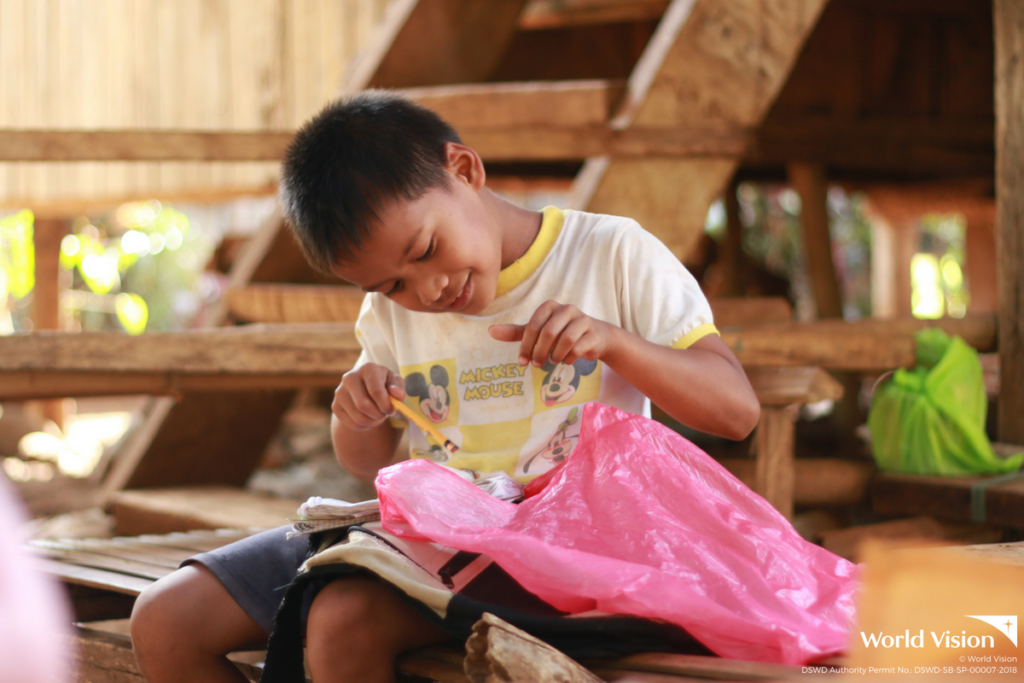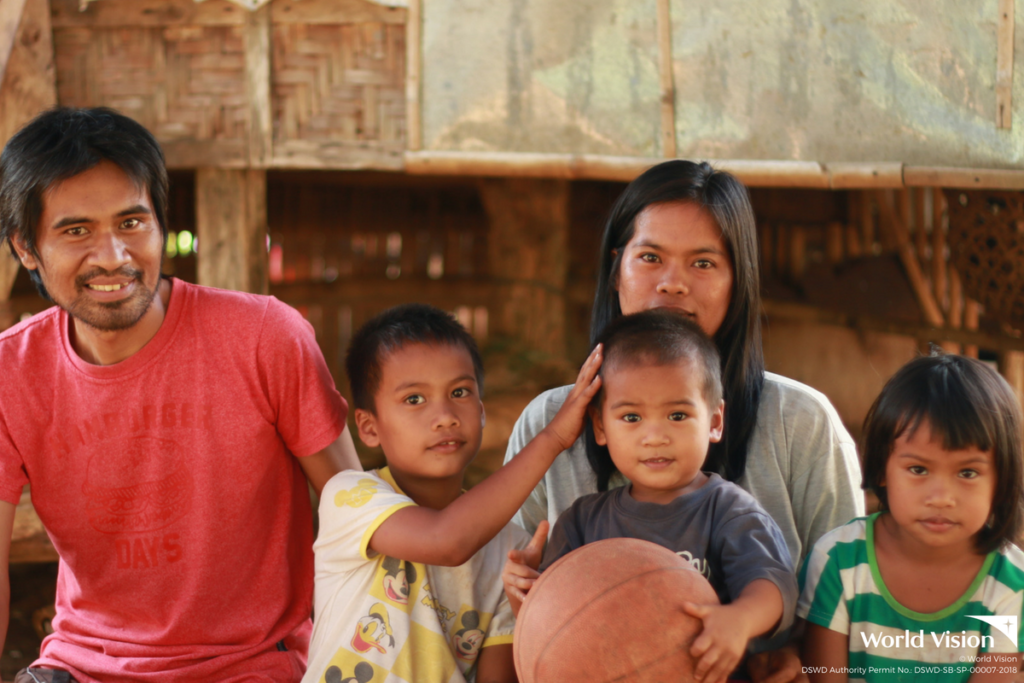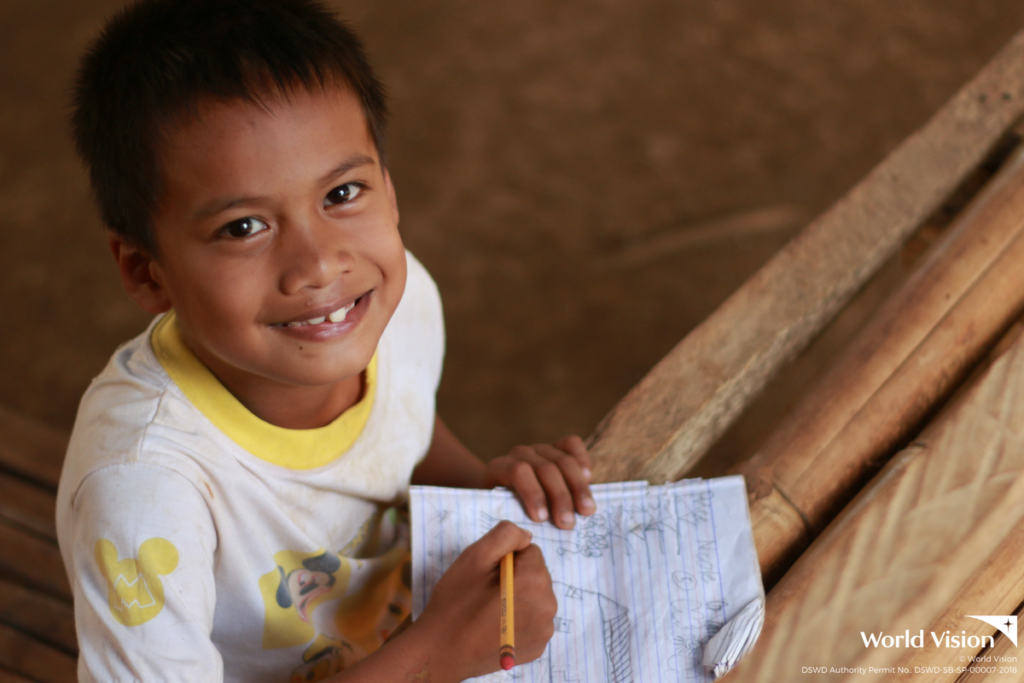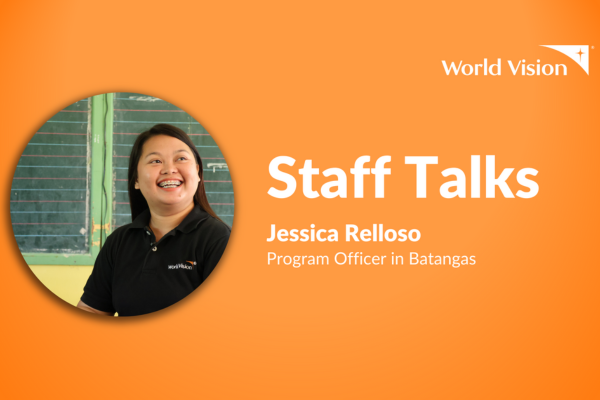What school supplies mean to Prince

Every day, rain or shine, 8-year-old Prince makes sure that his notebooks, papers and pencils are secured in a plastic before he keeps them in his already worn out bag.
“Just in case it rains, I won’t lose any of my school supplies,” he shares. Prince is the eldest of three and is aware of his parents’ situation. He is mindful that if he ever loses or gets one of his notebooks destroyed, it would take some time before he could have another one.
It may sound petty, but for many children like Prince, simple school materials could help jumpstart their future.
The Functional Literacy, Education and Mass Media Survey (FLEMMS) report shows that 1 in every 10 or four million Filipino children and youth was out of school in 2013. One of the top three reasons identified was insufficient family income. While primary and secondary education in public schools do not require tuition fee, other expenses like school materials could keep a child from enrolling or from continuing his education. A basic learner’s kit for a student could initially amount to P400 and may increase depending on the quantity of materials needed per grade level. This does not include expenses for transportation, allowance and other school requirements.

“The amount may not seem much but for my family, it already means food for a week,” shares Prince’s father, 33-year old Mario.
Mario used to earn at least P1,100 each week as sugarcane plantation worker in Bukidnon. Almost half of his income is used to buy rice that costs around P44 to P50 per kilo while the rest are for other daily expenses. In 2017, his hands started to get numb. He felt weaker each day, until he could no longer go to work. His wife, Marites, took the responsibility of providing for the family but her income could barely provide foods on the family’s table, more so, school supplies for their children.
“It was harder when father got sick but even if I barely get an allowance, I still want to go to school and learn. Having notebooks, pencil and papers, even recycled ones is already enough for me. One day, I will be an Engineer,” Prince shares.

Prince is inspired by the fact that his parents do not keep him from going to school or force him to help provide for the family. Although several efforts have been done to battle child labor in his province, poverty still forces many children to drop out of school and work in sugarcane, pineapple, banana, rice and corn plantations. In the 2007 national statistics office and UNICEF’s Country Programme for Children (CPC 6) data, of 799,000 child laborers in the country, 22% or more than 175,000 children came from Bukidnon.
“I’ve seen how the provision of school supplies has helped motivate the children in their studies and how this has helped encourage parents to send their children to school instead of sugarcane farms. I am personally happy that Prince and even his younger sister are now part of the sponsorship program and will no longer worry about their school supplies next school year,” shares community leader and volunteer, Gina. Aside from school supplies, Prince’s family will also be provided with an alternative livelihood to help augment his parents’ income.

World Vision is a global Christian relief, development and advocacy organisation dedicated to working with children, families and communities to overcome poverty and injustice. World Vision serves all people, regardless of religion, race, ethnicity, or gender.
Stay up to date with World Vision Philippines! Follow us on Facebook, Twitter and Instagram.








